How to Set Up Google Analytics for Your Drupal Website
| Drupal Development | 11 seen

Google Analytics is an essential tool for tracking and analyzing the performance of your Drupal website.
By using this tool, you can gather data on your website's traffic, user behavior, and overall performance. This information can be invaluable for making informed decisions about the direction of your website and improving its user experience.
In this article, we'll walk you through the process of setting up Google Analytics for your Drupal website.
Step 1: Get a Google Analytics Tracking ID The first step is to set up a Google Analytics account for your website. Go to www.google.com/analytics and sign up for a free account. Once you have created your account, you'll be given a unique tracking ID, which you'll need in the next step.
Step 2: Install the Google Analytics Drupal Module The next step is to install the Google Analytics module for Drupal 8. To do this, go to the Drupal.org website and search for the Google Analytics module. Download and install the module on your Drupal site.
Step 3: Enable the Google Analytics Module After installing the module, go to the modules page in your Drupal backend and enable the Google Analytics module. This will add the Google Analytics code to your website.
Step 4: Enter Your Tracking ID Next, go to the Google Analytics settings page and enter your tracking ID. Make sure to save your changes.
Step 5: Verify the Installation To verify that the Google Analytics module is installed correctly, go to your Google Analytics account and check the real-time report. You should see data being recorded for your website.
The Bottom Line
Setting up Google Analytics for your Drupal website is a straightforward process that can provide you with valuable insights into your website's performance. If you need any help with this process, consider reaching out to a Drupal developer for assistance. They can help you with the setup, custom development, and provide ongoing support to ensure that your Google Analytics integration is working correctly.
How to Automatically Publish Future Posts in Drupal with Views Module
| Drupal Development | 7 seen
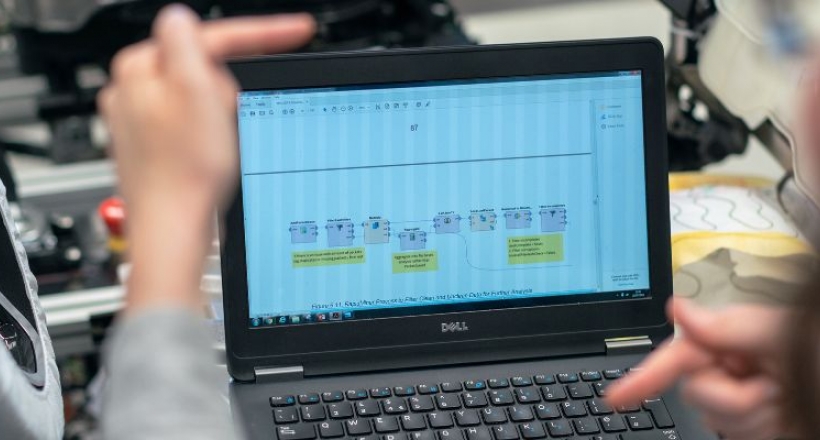
Drupal is a popular content management system that allows users to easily create and manage their websites. One of the features that Drupal offers is the ability to schedule posts for future publication.
This can be especially useful for bloggers and content creators who want to plan and publish their content in a systematic way. However, if you are using Drupal, you may find that scheduling posts can be a time-consuming process.
In this article, we will explain how you can use the Views module to automate the process of scheduling posts in Drupal.
One of the reasons why someone may want to schedule posts in advance is to plan their content publishing schedule. For example, if you write 10 articles in one night, you may want to have them published in the next 10 days. Scheduling posts in advance can also be useful if you are traveling or if you want to maintain a consistent blogging schedule.
However, scheduling posts manually can be a time-consuming task, especially if you have many articles to publish. This is why you may want to consider using the Views module to automate the process. The Views module is a powerful tool that allows you to create custom views and displays for your content. You can use Views to filter and sort your content based on various criteria, including date.
To schedule posts in Drupal using Views, you will need to have the Views module installed and enabled on your site. If you don't have the Views module installed, you can download it from the Drupal website. Once you have installed and enabled Views, you will need to create a blog page for your site using the Views module.
Once you have created a blog page using Views, you can add a filter to show only posts that have not yet been published. To do this, go to your Views settings, and add a filter for the post date. Under the operator, choose "Is less than or equal", and in the value field, enter "now". This will ensure that only posts with a publication date in the future will be displayed.
The solution to scheduling posts in Drupal using Views is simple and straightforward. By adding a filter for the post date, you can easily control which posts are displayed on your site. You can write your future posts and schedule them for publication, and they will remain hidden until the date of publication has arrived. This will save you time and allow you to plan your content publishing schedule more effectively.
In conclusion, if you are a blogger or content creator using Drupal, you may want to consider using the Views module to automate the process of scheduling posts. By adding a filter for the post date, you can easily control which posts are displayed on your site and ensure that your content is published consistently and on schedule. Whether you are planning your content publishing schedule, traveling, or simply want to maintain a consistent blogging schedule, scheduling posts in Drupal using Views is an effective and efficient solution.
Blog Contest: My Experience of Writing 16 Posts in 7 Days
| Blogging | 5 seen

On October 3rd, 2013 I embarked on a personal challenge of blogging for 365 days in a row. The goal was to create a consistent and meaningful presence online, to engage with my audience and to hone my writing skills.
I started the contest with a lot of excitement, eager to see the results of my efforts.
The first week of blogging proved to be an interesting experience. I managed to write 16 posts in 7 days, averaging 2.38 posts per day. I was pleased with my progress and felt proud of myself for sticking to my schedule. However, I soon realized that I had set the bar too low for myself and that I needed to step up my game.
To keep up with my ambitious goal, I decided to implement a system that would allow me to publish posts in the future. This would give me the flexibility to work ahead, in case I faced any unexpected challenges or obstacles along the way. The system also allowed me to schedule posts for specific times, ensuring that my blog would have a consistent flow of content, even when I was not able to write.
The system I created was simple and straightforward. I created a calendar that I could easily update and schedule my posts on. I also used an automation tool to help me publish my posts at the right time, freeing up my time to focus on writing and creating content.
The results of this system were amazing. It allowed me to focus on creating quality content, instead of worrying about publishing on time. I was also able to work ahead, ensuring that I had a backlog of posts ready for publication. This gave me peace of mind, knowing that I was always one step ahead, and that I had a safety net in case of any unforeseen circumstances.
In conclusion, the first week of my 365-day blog contest was a success. I learned that setting a goal and having a plan in place is essential for success. The system I created allowed me to focus on my writing, and to publish my content on time, consistently. I am excited to see where this journey will take me and to continue to improve my skills as a blogger.
As I move forward, I will continue to update my blog, sharing my experiences, insights, and lessons learned along the way. I hope that my journey will inspire others to pursue their passions, and to chase their dreams, no matter how big or small they may be. So, stay tuned for more updates, as I continue to blog my way through the next 364 days!
IMF Predicts 12.4% Economic Growth for Turkmenistan in 2013
| Macroeconomics | 5 seen

Turkmenistan is a country that has managed to defy the odds and experience steady economic growth, even during the global financial crisis of 2009. The country is renowned for having the fourth largest natural gas reserves in the world and is a member of the Commonwealth of Independent States (CIS).
According to data from the International Monetary Fund (IMF), Turkmenistan’s economy is projected to grow by 12.4% in 2013 and 10.4% in 2014. This growth is not limited to Turkmenistan as neighboring countries like Azerbaijan and Kazakhstan are also showing significant growth in their respective economies.
The country’s GDP has been consistently growing since the 1990s, with some fluctuations along the way. However, the overall trend has been upward and Turkmenistan has become one of the fastest-growing economies in the world.
Turkmenistan has been able to maintain its growth rate due to its abundant natural resources, particularly natural gas. The country has been able to leverage its rich reserves of natural gas to attract foreign investment and drive economic growth. In recent years, Turkmenistan has focused on diversifying its economy, investing in industries like agriculture, mining and tourism to create new sources of revenue.
One of the key factors that have helped Turkmenistan’s economy grow is its stable political environment. The country has been able to maintain a stable political environment despite being located in a region that has experienced significant turmoil in recent years. This stability has allowed the government to focus on developing the country’s economy and create a favorable business environment.
Another factor that has contributed to Turkmenistan’s economic growth is its favorable geographical location. The country is situated at the crossroads of Europe and Asia and has easy access to major markets in both regions. This has made it easier for Turkmenistan to trade with its neighbors and expand its exports.
Despite its economic growth, Turkmenistan still faces several challenges that may impact its future growth. One of the biggest challenges the country faces is the lack of diversification in its economy. The country still relies heavily on its natural gas sector, and while it has taken steps to diversify its economy, it will take time to see the results of these efforts.
Another challenge that Turkmenistan faces is its lack of transparency in the business environment. The country is ranked poorly in terms of transparency by organizations like Transparency International. This lack of transparency makes it difficult for businesses to operate and for investors to know what they are getting into.
Despite these challenges, the outlook for Turkmenistan’s economy remains positive. The country is projected to continue its steady economic growth in the coming years and is expected to become a major player in the global economy.
In conclusion, Turkmenistan’s growth story is a testament to the country’s abundant natural resources and favorable political environment. The country’s focus on diversifying its economy and its favorable location at the crossroads of Europe and Asia will help it continue its growth trajectory. The future looks bright for Turkmenistan, and it will be interesting to see how it continues to develop and expand its economy in the coming years.
Reinis Fischer's Personal Blog: A Journey of Thoughts, Ideas and More
| Blogging | 1 seen

Welcome to my personal blog, reinisfischer.com, where I aim to share my thoughts and experiences on topics that matter to me.
I've been blogging for a while now, but today marks the official launch of my personal blog under the domain name reinisfischer.com. This platform will be the primary hub for all my future blogging activities.
But who am I? Allow me to introduce myself. My name is Reinis Fischer, and I am a passionate individual with a love for writing. I believe that sharing our thoughts and experiences with others can help us to better understand the world around us and connect with others who share similar interests.
In addition to launching my personal blog, I am also participating in a blogging challenge, "Can you blog 365 days in a row." This challenge is designed to encourage bloggers to write and publish a post every day for a year. I am excited to take on this challenge and see where it takes me.
If you're interested in following my journey, be sure to check out my blog regularly. I'll be sharing my thoughts, experiences, and insights on a wide range of topics. Whether you're interested in personal development, creativity, or anything in between, I hope you'll find something here that resonates with you.
Thank you for visiting reinisfischer.com, and I hope you'll enjoy following my journey as I continue to blog and share my thoughts with you.
Ukraine vs Poland: A Comparison of GDP and Economic Development (2012)
| Macroeconomics | 19 seen

Both Ukraine and Poland have experienced significant changes in their economies since the collapse of the Soviet Union.
While both countries were part of the Iron Curtain and had similar population sizes, their economic growth followed different paths.
In 1990, Ukraine had a higher GDP and GDP per capita compared to Poland.
However, over the past two decades, Poland's economy has grown faster, with its GDP and GDP per capita reaching 489.8 billion USD and 12.707 thousand USD respectively in 2012. In contrast, Ukraine's GDP in 2012 was 176.3 billion USD and its GDP per capita was 3.866 thousand USD.
In the 1990s, both Ukraine and Poland underwent significant economic reforms aimed at transforming their economies from centrally planned to market-oriented systems. However, the pace of reform was different in each country. Poland was one of the first post-Soviet countries to undertake market-oriented reforms, and it quickly attracted significant foreign investment, leading to rapid economic growth. On the other hand, Ukraine struggled to implement economic reforms, and its growth was slower.
One of the key factors that contributed to Poland's faster growth was its successful integration into the global economy. Poland joined the European Union in 2004, which allowed it to access the single market and receive substantial EU funding for infrastructure projects. In addition, Poland attracted a large number of foreign companies that were attracted by the country's low-cost labor and favorable investment climate.
Ukraine, on the other hand, has struggled to integrate into the global economy. Despite its large and well-educated population, the country has been unable to attract significant foreign investment, in part due to its political instability and corruption. In addition, Ukraine has been slow to implement reforms, and its business environment remains challenging for foreign companies.
Another factor that has contributed to Poland's faster growth is its successful agricultural sector. Agriculture is one of the country's key economic drivers, and its agriculture industry has grown rapidly over the past two decades. In contrast, Ukraine's agriculture sector has struggled due to a lack of investment, corruption, and political instability.
In conclusion, the data shows that Poland has outpaced Ukraine in terms of economic growth since the collapse of the Soviet Union. The reasons for this difference are complex, but they include Poland's successful integration into the global economy, its favorable investment climate, and its thriving agricultural sector. If Ukraine is to catch up with its neighbor, it will need to implement significant reforms and tackle its long-standing economic and political challenges.
Ilham Aliyev's Re-Election in 2013: A Look Back on Azerbaijan's Presidential Elections
| Emerging Markets | 7 seen

The 2013 Presidential elections in Azerbaijan saw the re-election of incumbent President Ilham Aliyev, who secured 84.72% of the vote, according to the Central Election Commission.
President Aliyev's victory was widely expected.
In the years since the 2013 Presidential elections, President Aliyev has continued to lead Azerbaijan, consolidating his power and pursuing a number of major reforms aimed at modernizing the country and strengthening its economy. During his presidency, Azerbaijan has seen significant progress in a number of key areas, including energy security, transportation, and economic development.
Under President Aliyev's leadership, Azerbaijan has become an increasingly important player in the global energy market, leveraging its rich reserves of oil and natural gas to secure long-term energy contracts and investments from countries around the world. At the same time, Azerbaijan has invested heavily in modernizing its transportation infrastructure, including the construction of a new international airport in its capital city of Baku, and the development of a major new transportation hub in the Caspian Sea.
In addition to these reforms, President Aliyev has also taken steps to improve the overall business environment in Azerbaijan, including reducing red tape and bureaucracy and encouraging greater investment and entrepreneurship. This has helped to spur economic growth and create new opportunities for the country's businesses and citizens.
Despite these achievements, President Aliyev's presidency has not been without controversy. Critics of the President have accused him of cracking down on dissent and limiting political freedom, including through the use of restrictive laws, restrictions on the media, and the arrest of opposition leaders. Additionally, there have been concerns about corruption and nepotism within the government, and allegations of widespread human rights abuses.
In conclusion, President Ilham Aliyev's re-election in 2013 was a significant event for Azerbaijan, solidifying his position as one of the country's most important leaders in recent history. Through a combination of reforms and investment, President Aliyev has helped to spur economic growth and improve the overall quality of life for Azerbaijan's citizens, even as he has faced criticism for his handling of political and human rights issues.
Top 20 Largest Economies in the World by GDP Nominal
| Macroeconomics | 49 seen

The global economy is a complex and dynamic system that is constantly changing. In order to get a better understanding of the world's top economies, it is important to take a look at the latest data and trends. In this article, we will explore the top 20 largest economies in the world by GDP nominal in 2019 and analyze the GDP per capita in the top 10 largest countries by GDP.
According to the World Bank, the top 20 largest economies in the world by GDP nominal in 2019 are as follows:
When we take a closer look at the top 10 largest countries by GDP, we can see that the United States is by far the largest economy in the world, with a GDP of 21.439 trillion USD. China is the second largest, with a GDP of 14.140 trillion USD, followed by Japan with a GDP of 5.153 trillion USD.
When it comes to GDP per capita, the top 10 largest countries by GDP look as follows:
It is interesting to note that four of the five BRICS countries (Brazil, Russia, India, China) are on the list of the top 10 largest countries by GDP. All four countries play a significant role in the global economy and are considered to be developing countries, with relatively low GDP per capita levels.
Russia currently has the lowest GDP per capita in the top 10, with a figure of 11.1 thousand USD. On the other hand, the United States has the highest GDP per capita in the top 10, with a figure of 65.5 thousand USD.
When it comes to the future of the global economy, it is difficult to make predictions. However, many experts believe that China has the potential to become the world's largest economy in the future. As the Chinese economy continues to grow, it is likely that we will see a significant increase in GDP per capita in the country as well.
In conclusion, the top 20 largest economies in the world by GDP nominal in 2019 paint a picture of a dynamic and constantly changing global economy. The United States is currently the largest economy in the world, followed by China and Japan. The top 10 largest countries by GDP per capita are a mix of developed and developing countries, with the United States having the highest
Azerbaijan's $3 Billion Azerbaijan Tower: The Crown Jewel of the Khazar Islands
| Emerging Markets | 139 seen
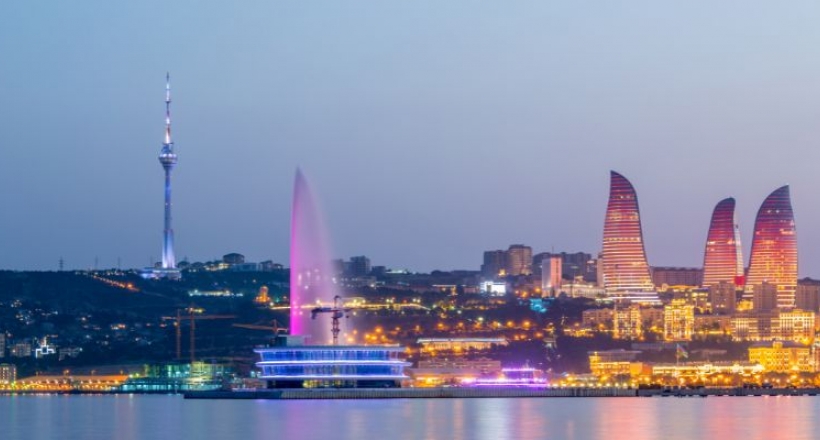
The construction of the Azerbaijan Tower and the Khazar Islands, a $100 billion city of 41 artificial islands in the Caspian Sea, was first planned to begin in 2015 and be completed by 2025.
There is no recent update on the status of the project and whether it has been initiated or not. It's possible that the project has been postponed or even canceled due to various reasons such as funding, economic conditions, or other considerations. It's recommended to check with local sources for the most up-to-date information on the status of the Azerbaijan Tower and the Khazar Islands.
The construction of the Azerbaijan Tower and the Khazar Islands project represents a massive investment for Azerbaijan, with the cost estimated at 100 billion dollars.
This cost is significantly higher than the current Gross Domestic Product (GDP) of Azerbaijan, making it a significant undertaking. The Azerbaijan Tower alone is expected to cost 3 billion dollars, and it will serve as the centerpiece of the Khazar Islands.
The Khazar Islands are planned to be an artificial archipelago spread over 3,000 hectares in the Caspian Sea.
The project aims to provide a city for one million residents, complete with 150 schools, 50 hospitals, daycare centers, parks, shopping malls, cultural centers, university campuses, and a Formula 1 quality racetrack. These facilities are designed to withstand earthquakes up to magnitude 9.0 and will be connected to the mainland by 150 bridges and a large municipal airport.
Construction on the Azerbaijan Tower is expected to begin in 2015 and be completed by 2019.
The Khazar Islands project is slated to be finished between 2020 and 2025. With such a massive investment in infrastructure and development, it will be interesting to see how this impacts the GDP of Azerbaijan in the coming years.
One can expect that the completion of the project will have a positive impact on the country's economy, creating new jobs and attracting foreign investment. The addition of new residential, commercial, and recreational facilities will also provide new opportunities for the people of Azerbaijan.
However, it is also important to consider the potential environmental impacts of such a massive project. The construction and operation of the Khazar Islands could have serious implications for the Caspian Sea, its ecosystem, and the surrounding areas. It is crucial to ensure that adequate measures are taken to minimize any potential negative impact and protect the environment.
In conclusion, the construction of the Azerbaijan Tower and the Khazar Islands project represents a massive investment for Azerbaijan, with the potential to have a significant impact on the country's economy and its people. While the project holds great promise, it is important to consider the potential environmental impacts and ensure that adequate measures are taken to protect the environment.
Azerbaijan vs UAE: Comparing the Oil-rich Countries' GDP and Living Standards
| Emerging Markets | 22 seen
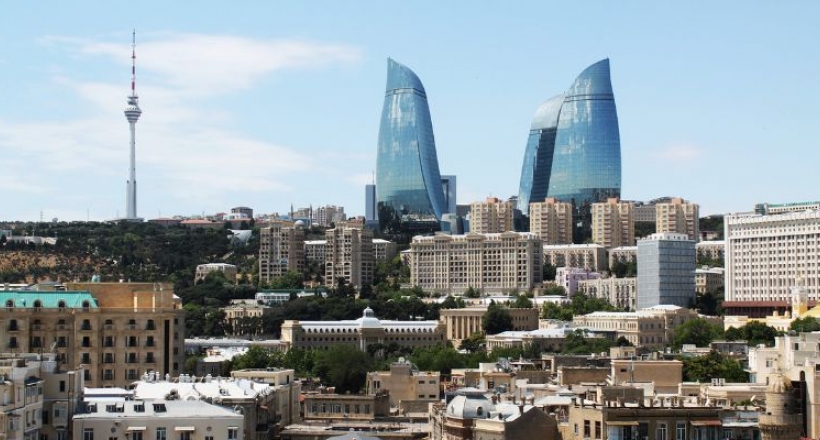
Have you read the recent article on NYTimes about Azerbaijan's ambitious plan to become famous?
Azerbaijan, like UAE, is an oil-rich country with aspirations for growth and development. In this post, we will compare the GDP and living standards of Azerbaijan and UAE to see how they compare.
Using data from the World Bank, we can see that in 2011, the GDP of Azerbaijan was 63.4 billion USD while the GDP of UAE was 360.2 billion USD. The GDP per capita in Azerbaijan was 6.911 thousand USD and in UAE it was 40.363 thousand USD.
It's clear that UAE has a much higher standard of living than Azerbaijan, but Azerbaijan has ambitions to catch up.
In a future blog post, we will examine the oil reserves of each country and explore the possibility of Azerbaijan outperforming UAE. Additionally, we will delve into the distribution of wealth in Azerbaijan and UAE, to understand if the wealth is evenly shared among the citizens or controlled by a few oligarchs. Stay tuned for more insights on Azerbaijan vs UAE comparison.
The State of Ukraine's Economy: A Look Since the Collapse of the Soviet Union
| Emerging Markets | 17 seen

Ukraine, a country once considered as an integral part of the Soviet Union, has had a checkered economic history since its independence.
Despite being one of the largest economies in Eastern Europe, Ukraine's GDP per capita has always lagged behind Russia, which has been three-four times better in terms of GDP terms per capita. The recent announcement by the World Bank that the forecast for Ukraine's GDP has been cut down to zero this year (2013) has only added to the country's economic woes.
The upcoming Eastern Partnership summit in Vilnius, where the Association Agreement, including its Deep and Comprehensive Free Trade Area, is to be signed, has generated a lot of interest and speculation about the future of Ukraine's economy. Many are hoping that eventual incorporation into EU structures will change the country's economic trajectory for the better.
One of the countries often cited as a positive example is Poland, which has seen significant improvements in its economy and GDP since joining the EU. In the next few posts, I will be comparing Ukraine with Poland to gain a better understanding of the challenges facing Ukraine's economy and what lessons can be learned from Poland's experience.
It is important to understand the root cause of Ukraine's economic struggles. The country has a rich cultural and historical heritage and vast natural resources, but has been unable to leverage these assets to its advantage. Corruption, political instability, and an outdated economic system have all contributed to the country's economic malaise. The government has been slow to implement the necessary reforms to modernize the economy and attract foreign investment.
In addition, Ukraine's close proximity to Russia, which has a significant influence on the country's economy, has also been a hindrance to its growth. Russia has used its natural gas supplies as a political weapon, putting pressure on Ukraine's economy and limiting its ability to pursue independent economic policies.
The signing of the Association Agreement with the EU, however, holds great promise for the future of Ukraine's economy. The agreement, which includes a Deep and Comprehensive Free Trade Area, is expected to provide a much-needed boost to the country's economy by increasing exports and attracting foreign investment. The EU is also expected to provide technical assistance and financial support to help Ukraine implement the necessary reforms.
Poland, on the other hand, has been a success story since joining the EU. The country has seen significant improvements in its economy and standard of living, and has become a regional economic leader. Poland's experience can provide valuable lessons for Ukraine as it seeks to follow a similar path.
In conclusion, Ukraine has a lot of potential to become a successful and prosperous economy, but it will require a concerted effort from the government, the private sector, and the international community. The signing of the Association Agreement with the EU provides a great opportunity for Ukraine to turn the corner and move towards a more prosperous future. In my next posts, I will continue to explore the challenges facing Ukraine's economy and what lessons can be learned from Poland's experience.
A Look at the 2013 GDP Forecasts for Baltic States and Caucasus
| Macroeconomics | 6 seen

t is fascinating to compare the economic growth of the Baltic states and Caucasus regions and make predictions on their future growth. The competition between these two regions to achieve a GDP of 100 billion USD is intense. In 2012, the total GDP of the Baltic states was 92.47 billion USD, while that of the Caucasus was 92.94 billion USD, with the latter leading by just 47 million USD. With 2013 already underway, it is interesting to take a look at the forecasts for each country and make predictions for the year.
The European Bank for Reconstruction and Development (EBRD) predicts that Georgia's economy will grow by 3% in 2013, a decrease from the 5% predicted in January and lower than the government's official forecast of 6%. Armenia is expected to have a 5% growth, while Azerbaijan is expected to grow by 5% as well. On the other hand, the growth predictions for the Baltic states are much lower. Estonia is forecasted to have a growth rate of 1%, Latvia 4.1%, and Lithuania 3.5%.
When we perform some simple calculations based on these predictions, we see that the Caucasus region is expected to have a total GDP of 97.27 billion USD, while the Baltic states are expected to have a total GDP of 95.31 billion USD. This means that both regions are expected to have some economic growth, with an increase of 7.17 billion USD, equivalent to 70% of Armenia's economy.
However, it remains to be seen what the real figures for 2013 will be. It is also worth exploring the reasons behind the low GDP growth rate prediction for Estonia, and whether it is possible for Georgia to catch up to Estonia in the future. Georgia has a population that is roughly three times that of Estonia, and with a current difference of 5.76 billion USD, it will be interesting to see if Georgia can close the gap in the near future.
In conclusion, it is clear that both the Baltic states and the Caucasus regions are experiencing economic growth, and that their competition to achieve a GDP of 100 billion USD is far from over. Only time will tell what the real figures for 2013 will be, and which region will come out on top. Regardless of the outcome, it is heartening to see that both regions are experiencing positive economic growth and making strides towards a brighter future.
Simplify Image Uploads on Your Drupal Site with Multiupload Modules
| Drupal Development | 41 seen

Do you find uploading images one by one on your Drupal site to be a time-consuming and frustrating task?
If so, the Multiupload Filefield Widget and Multiupload Imagefield Widget modules can provide an efficient solution. These modules are ideal for those who want complete control over their Drupal installation.
To use these modules, follow these steps:
To use the multi-upload feature, go to your content type and add new content. Under the images section, select multiple images by clicking the browse images button, and then clicking open. It's that simple!
Please note that the image fields settings must be set to display unlimited images for this feature to work. This will allow you to upload multiple images in one go, saving you time and making the process of adding images to your Drupal site much smoother.
In conclusion, if you're looking for a way to simplify the process of uploading images to your Drupal site, the Multiupload Filefield Widget and Multiupload Imagefield Widget modules are definitely worth a try. With these modules installed, you'll be able to upload multiple images with ease, giving you
Few shots from Tbilisoba 2013
| Living in Georgia | 8 seen
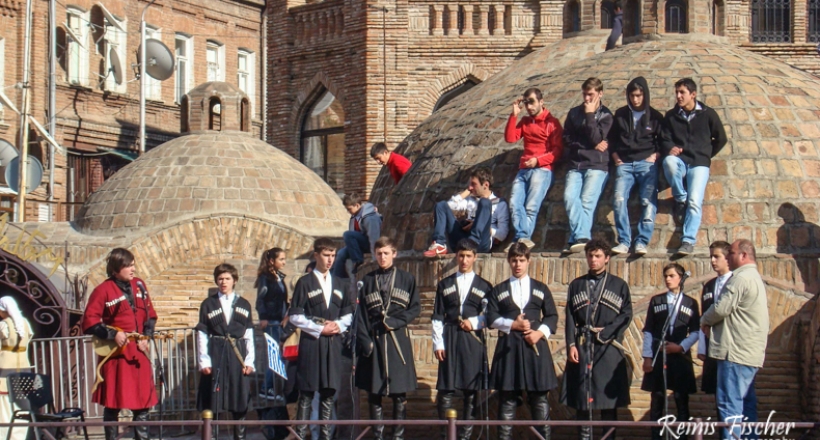
On October 4 - 6, 2013 Tbilisi city festival named Tbilisoba was celebrated. Here are few shots I captured with my old Sony DSC camera and three years later post-processed using Adobe Lightroom.
Tbilisoba (Georgian: თბილისობა) is an annual October festival which celebrates the diversity and history of Tbilisi, the capital of Georgia. It was first held on October 28, 1979, and has since become an established tradition. The festival features open-air concerts of traditional music and dancing and various cultural events, centered on Old Tbilisi, the historical part of the city. Beyond celebrating the city's past and present, people from all over Georgia represent their region at the fair of the harvest. Awarding honorary citizenship of Tbilisi by the city government also occurs in the framework of Tbilisoba.
Orchestrate playing at Rike Park
If you are new to Tbilisi - make sure you visit Rike park and The Bridge of Piece
Tbilisoba set on the streets of Tbilisi Old Town
The best chances to observe Tbilisoba will be at Abanotubani district
Georgian performers on the roofs of the Sulphur Baths
Grab your camera and make the best out of it
Autumn harvest Festival
Buy goods from local farmers
Khinkali
Try authentic Georgian cuisine
Tbilisoba 2013
Enjoy your meal at bus stop
Tbilisoba
The Bottom Line
Tbilisoba is an amazing cultural and gastronomical experience set on streets of Tbilisi
Comparing the Economy of Nordic Countries: 2012 GDP and Per Capita Results
| Macroeconomics | 16 seen
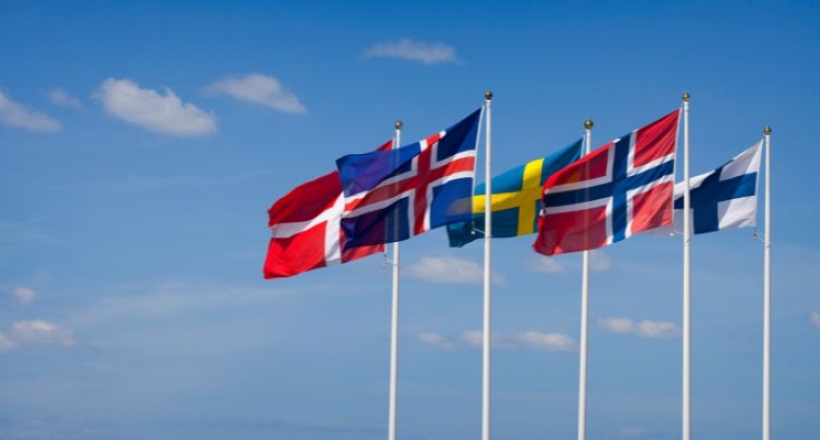
The Nordic region, consisting of Denmark, Finland, Iceland, Norway, and Sweden, is known for its high standard of living and robust economies. In 2012, these countries combined had a total GDP of 1.603 trillion USD, which is a significant number compared to other regions such as the Baltic states or the Caucasus.
When looking at the GDP of each country, Sweden had the highest with 525.7 billion USD, followed by Norway with 499.7 billion USD, Denmark with 314.2 billion USD, Finland with 250 billion USD, and Iceland with 13.66 billion USD. However, when considering GDP per capita, the picture changes. Norway leads the way with a GDP per capita of 99,550 USD, followed by Denmark with 56, 210 USD, Sweden with 55, 244 USD, Finland with 46, 178 USD, and Iceland with 42, 658 USD.
One reason for Norway's high GDP per capita could be its vast oil reserves. Norway is one of the world's largest exporters of oil and natural gas, which significantly contributes to its economy. In addition to its oil industry, Norway also has a strong shipping industry, fishing industry, and a well-developed tourism sector.
Denmark is another prosperous country in the Nordic region, known for its strong agricultural sector, advanced technology, and a highly skilled workforce. Denmark is also known for its social welfare programs, which provide a safety net for its citizens. The country has a high standard of living and is consistently ranked as one of the happiest countries in the world.
Finland, on the other hand, has a strong technology sector, particularly in the field of electronics and mobile phones. The country is home to companies such as Nokia, which has had a significant impact on Finland's economy. In recent years, Finland has also become a hub for startups and innovation, which has further contributed to its economic growth.
Iceland has a diverse economy, with industries ranging from fishing and tourism to financial services and technology. The country is known for its abundant natural resources, including geothermal energy and hydropower, which play a significant role in its economy.
Finally, Sweden is known for its strong economy, high standard of living, and well-developed infrastructure. The country is home to several multinational companies, including IKEA, H&M, and Volvo, which have had a significant impact on Sweden's economy. In addition to its industrial sector, Sweden also has a thriving tech industry and is a leader in renewable energy.
In conclusion, the Nordic region has a robust and diverse economy, with each country contributing to its overall prosperity. From Norway's oil industry to Denmark's social welfare programs, each country has its own strengths and unique factors that contribute to its economic growth. Overall, the Nordic region is a great example of how a well-functioning economy can lead to a high standard of living and prosperity for its citizens.
Latest video

Tsikhisdziri & Batumi Botanical Garden
After returning from our amazing trip to Thessaloniki, we decided to extend our holiday a bit longer — this time in beautiful Tsikhisdziri. Huge thanks to Eto for kindly offering her cozy apartments at Bambo Beach, where we enjoyed a full week of relaxation by the sea.During our stay, we explored local gems like Shukura Tsikhisdziri (შუქურა…
Summer in Latvia 2025
Summer in Latvia movie is out - Join us on our July (2025) journey through Latvia: installing a bathtub in our countryside cottage, setting up a pop-up store at Bangotnes, celebrating a birthday in Vērbeļnieki, traveling via Riga to Jaunpiebalga, Vecpiebalga, Smiltene, and Valka. From sipping sparkling wine with swallows to running 4K morning…
Chateau Ateni. Gori
This time (May 2025), our journey takes us to Gori and the enchanting Chateau Ateni - a hidden gem where authentic Georgian cuisine blends seamlessly with avant-garde natural wines, soulful traditional dance, and even the charming surprise of a small chick farm.What makes this trip extra special is sharing it with our Latvian/Georgian friends,…Living in Georgia

12 Rounds Boxing Club in Tbilisi
Sometimes even the most loyal gym-goers need to shake things up—and that's exactly what I did this month. After years of training at the "luxurious Axis Tower gym", I decided to take a short break. Not because I had any complaints about…
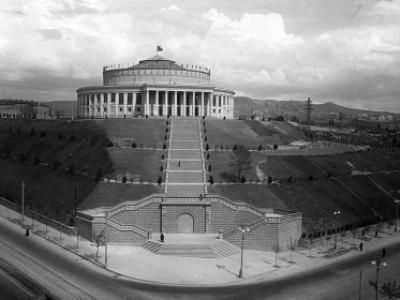
Tbilisi Circus: A Historic Landmark with a Surprising Past
Tbilisi Circus is an iconic part of the city's cultural landscape. Having lived in Georgia since 2011, I have passed by the Tbilisi Circus almost every day. However, it wasn’t until I attended a show that I truly appreciated its grandeur…
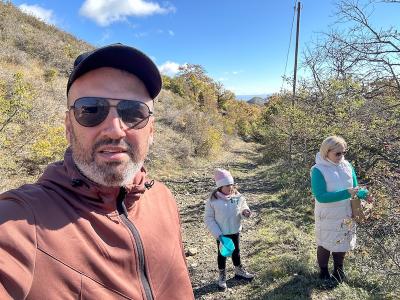
Foraging for Mushrooms near Tsodoreti Lake: A Day in the Suburbs of Tbilisi
Back in June 2024, I first came across Tsodoreti Lake during one of the Tbilisi Trails races, which turned out to be one of the most challenging runs of my life. While I tackled the 10K trail route, my partner and our kiddo took a gentler…
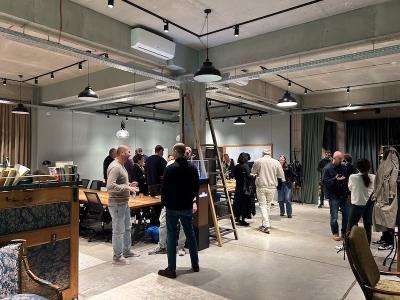
Axel Georgian Business Angel Networking Event: Exploring Opportunities in Tbilisi
In mid-October 2024, I had the pleasure of attending the Axel Georgian Business Angel networking event, held right here in Tbilisi. Having passively observed the Georgian tech scene for over a decade, this event provided the perfect…
Frame House

Frame House Upgrades: Big Windows, New Porch, and Apple Trees Planted in Latvia
In mid-April, during our kiddo’s Easter school break, we traveled to Latvia for about 10 days — a trip packed with projects, energy, and transformation. A lot of pre-planning had gone into it before we even arrived: we ordered the windows…
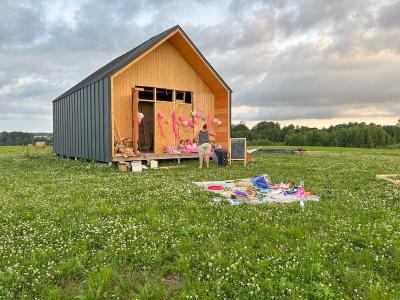
Frame House in Latvia: Outdoor Patio, Inner Walls, and More
As June came to an end, our family embarked on a journey from Tbilisi to Latvia, skipping Renee's school year for the last week and focus on our frame house project. Here's a glimpse into our busy but rewarding time working on the house.We…
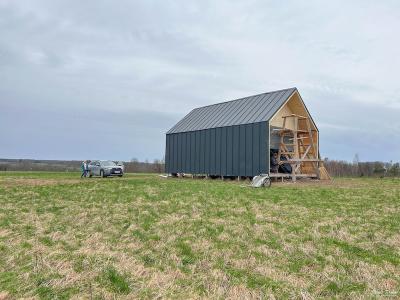
Spring Break Project: Building Progress on Our Frame House in Latvia
As the chill of winter slowly gives way to the warmth of spring, it's the perfect time to roll up our sleeves and dive back into the construction of our dream frame house in Latvia. During this Spring break from British International…
Piece of Life

Postcards from Marseille
It’s been nearly two years since our last trip to Marseille, a sun-drenched jewel on France’s southern coast that left an indelible mark on our memories. That summer of 2023, we set out to explore the city’s vibrant beaches and winding old town, arriving and departing through the bustling hub of Marseille St. Charles train station. As I sit…
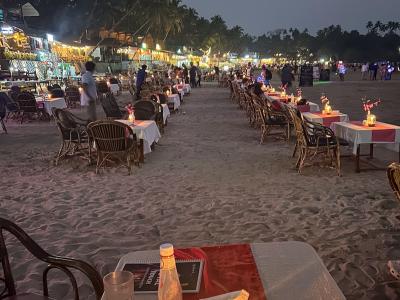
Christmas Eve at Palolem Beach: Fire Shows, Old Monk
While we just celebrated Orthodox Christmas in Georgia, I can’t help but delve into the memories of our Western Christmas last year (2024), spent on the serene shores of Palolem Beach in Goa, India. That evening was magical in every way, filled with vibrant energy, beautiful scenery, and a new discovery that made the night unforgettable.Palolem…

A Family Guide to Borjomi: Hiking Trails and Sulfur Bath Tips
As summer came to a close, we continued our family's tradition of visiting Borjomi. This year marked yet another memorable trip at the end of August 2024, reaffirming our love for this beautiful Georgian town. Visiting Borjomi at least twice a year has become a cherished routine, a piece of life that we look forward to, blending relaxation,…
Travel guides

Summer in Latvia 2025
Summer in Latvia movie is out - Join us on our July (2025) journey through Latvia: installing a bathtub in our countryside cottage, setting up a pop-up store at Bangotnes, celebrating a birthday in Vērbeļnieki, traveling via Riga to…

Birthday in Thessaloniki, Greece
Turning 40 is a milestone worth celebrating in style, and what better way than in Thessaloniki — a city that seamlessly blends history, culture, and cuisine. From affordable flights and boutique stays to seafood feasts and hidden beaches,…

Azeula Fortress, Tbilisi Sea, and Ateni Sioni
August ended with yet another packed and memorable weekend in Georgia. This time, our journey took us from the hills near Kojori to the refreshing waters of the Tbilisi Sea, and finally to the historical town of Gori, where we enjoyed a…
Hotel Reviews
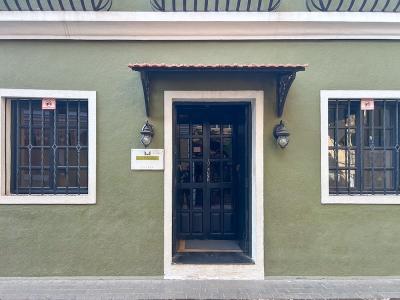
Stays & Trails La Maison Hotel Review in Panaji
At the tail end of 2024, just before catching our flight back to Delhi, we decided to book a one-night stay at Stays & Trails La Maison Fontainhas in Panaji, Goa. After weeks staying in Palolem beach, we wanted to wrap up our trip with…
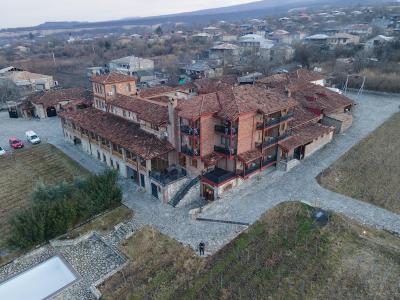
Schuchmann Wines Château: A Long-Awaited Stay in Georgia’s Premier Winery Hotel & Spa
It took us over a decade to finally make it to Schuchmann Wines Château & Spa, and it was well worth the wait! We’ve spent years recommending this stunning winery hotel to visiting friends and business partners, yet somehow, we had…
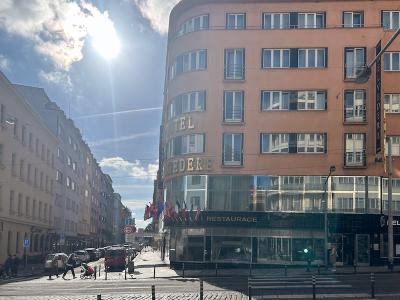
Hotel Belvedere Prague: A Practical Stay with Easy Access
During our recent trip to Prague in mid-October 2024, we stayed at Hotel Belvedere. My partner attended the MEET Central Europe Translators conference, and we were joined by one of our office employees, so we opted to book two rooms. …
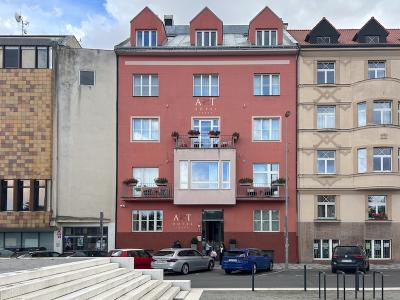
Review: Art Hotel Prague – A Cozy Stay in a Tranquil Part of Prague
During our recent trip to Prague in October 2024, we opted for a one-night stay at the Art Hotel Prague. We arrived at the hotel via Bolt taxi from Václav Havel Airport, which was straightforward and efficient. At about EUR 120 per room…
Toursim objects
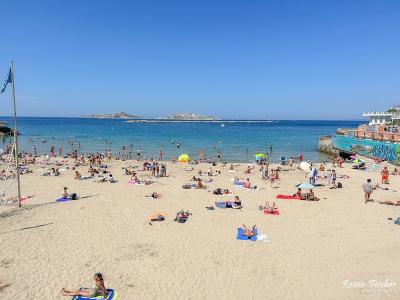
Plage des Catalans: A Shrinking Memory in Marseille
Plage des Catalans, a sandy crescent tucked along Marseille’s coastline, holds a special place in my travel tapestry. I first visited this beach in the summer of 2003, a carefree stop during my early adventures in the city. Back then, it felt like a haven—close to the bustling port yet offering a slice of Mediterranean calm. When I returned…

Colva Beach: Golden Sands and Tranquility in Goa
Colva Beach, located in South Goa, is known for its expansive golden sands and tranquil atmosphere. Stretching for several kilometers along the Arabian Sea, the beach offers a peaceful escape from the busier tourist hubs in the region. Its wide shoreline, framed by swaying palm trees, provides plenty of space for visitors to relax, stroll, or…

Charles Bridge: A Timeless Landmark in Prague
The Charles Bridge (Karlův most) in Prague is one of the most iconic and historic landmarks in Europe. Built in the 14th century under the reign of King Charles IV, this Gothic stone bridge spans the Vltava River, connecting Prague's Old Town with the Lesser Town (Malá Strana). Adorned with a series of 30 Baroque statues and surrounded by…
Macroeconomics
| GDP Growth in the Baltic States (2016–2025) | |
| Minimum Wages in European Union 2024 | |
| Minimum Wages Set to Increase in Baltic States in 2024 | |
| GDP Per Capita in OECD countries 2022 |
Servers and Drupal
Genealogy
| Baltic German DNA Uncovered: Tracing My Ancestry to the von Anrep Nobility | |
| MyHeritage DNA test result | |
| MyHeritage DNA test, flight to Tbilisi, Stock Recovery |